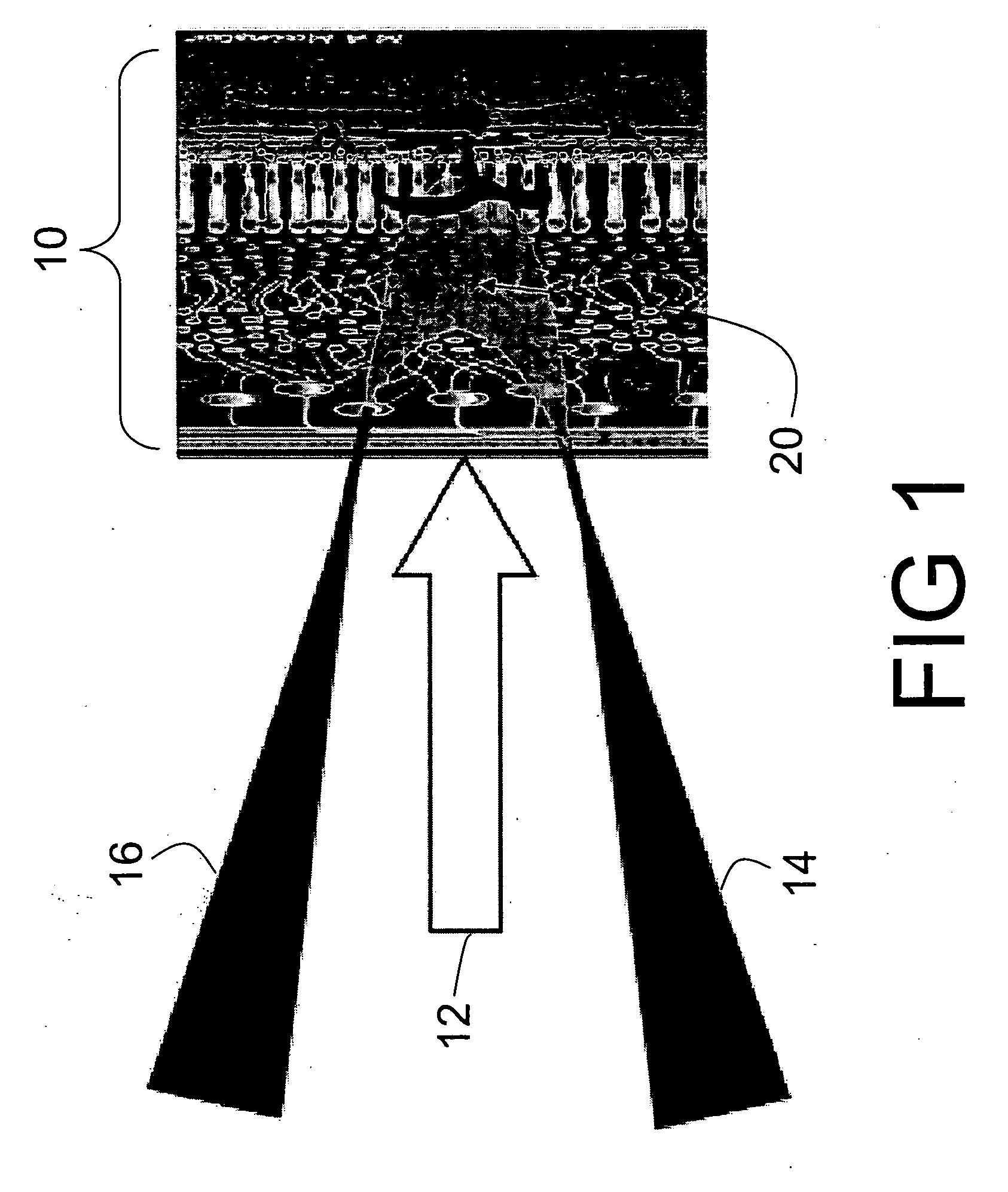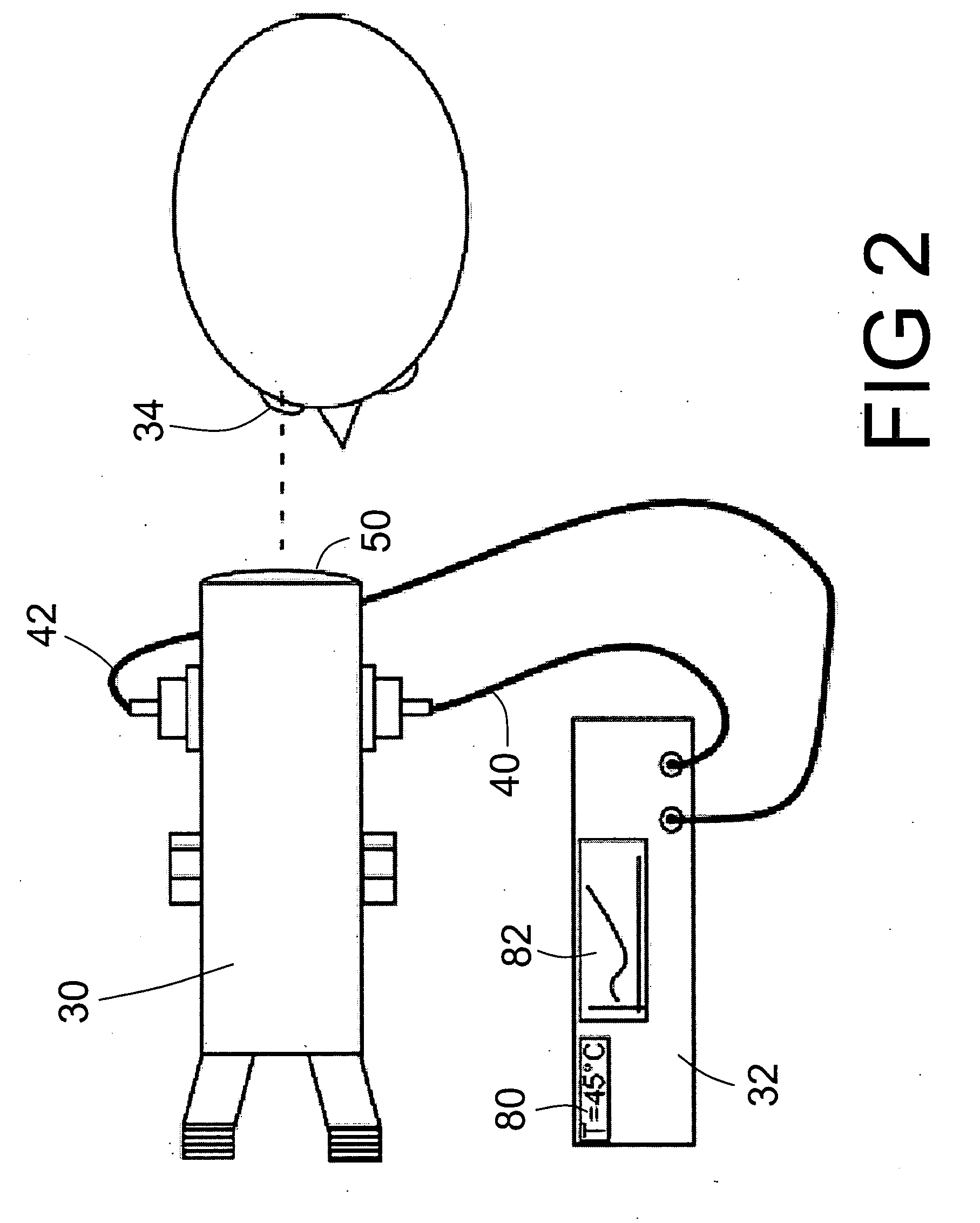Monitoring of retinal temperature during laser therapy
a technology of laser therapy and retinal temperature, applied in the field of surgical and medical monitoring arts, can solve the problems of not being easily detected by medical personnel, affecting the treatment effect,
- Summary
- Abstract
- Description
- Claims
- Application Information
AI Technical Summary
Benefits of technology
Problems solved by technology
Method used
Image
Examples
Embodiment Construction
[0028] With reference to FIG. 1, the optical techniques disclosed herein exploit temporal fluctuation of secondary emitted photons from the irradiated tissue to measure the tissue temperature. Retinal tissue 10 is treated using a treatment laser beam 12. The tissue is also illuminated by a low power probe beam 14 illuminating the retinal tissue 10 at an angle respective to the treatment laser beam 12. In some embodiments, the probe beam 14 is a focused laser beam; however, focused lamp light, focused light from a semiconductor light emitting diode (LED) or laser, or the like can also be used. Interaction of the probe beam 14 with the retinal tissue 10 produces a secondary beam 16 of light that is collected angularly symmetrically with respect to the treatment laser beam 12. The temperature of the treated retinal region 10 is determined by analyzing the scattering properties of a zone 20 included within the probe beam 14 and from which the secondary radiation 16 is emitted. In some c...
PUM
 Login to View More
Login to View More Abstract
Description
Claims
Application Information
 Login to View More
Login to View More - R&D
- Intellectual Property
- Life Sciences
- Materials
- Tech Scout
- Unparalleled Data Quality
- Higher Quality Content
- 60% Fewer Hallucinations
Browse by: Latest US Patents, China's latest patents, Technical Efficacy Thesaurus, Application Domain, Technology Topic, Popular Technical Reports.
© 2025 PatSnap. All rights reserved.Legal|Privacy policy|Modern Slavery Act Transparency Statement|Sitemap|About US| Contact US: help@patsnap.com



